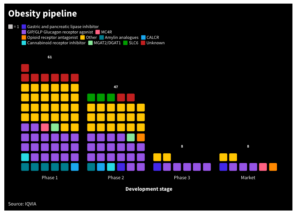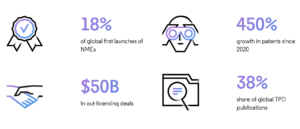
Real World Data: Beyond clinical trials
Only a small fraction of carefully selected patients are allowed to enroll in randomised controlled trials involving new compounds - the gold standard of drug assessment. But trying to acquire the most significant efficacy and safety results for a new drug is one goal, treating patients every day in hospitals or practices with it is something else entirely. Discrepancies are inevitable. Now real-world data that's been gathered in large observational studies is attempting to close the gap between experimental, artificial study settings and clinical realities.
Real Word Trials (RWT), Real World Data (RWD) and Real World Evidence (RWE) activities are now seeking to close this gap by designing studies better able to predict how drugs perform in everyday settings, and how they alter patients’ lives. Although the Real World label has often been (mis-)used, pharma companies and governmental authorities are now aware that efficacy information on drugs tested in clinical trials doesn’t tell the whole story when it comes to meeting individual patient needs. Real-world evidence can be defined as evidence from data collected outside of conventional randomised controlled trials, says Peter Arlett, Head of Pharmacovigilance and Epidemiology at the European Medicines Agency (EMA). That includes sources like electronic health records, registries, hospital records and health insurance data. Increasingly, says Arlett, other data – like biobank, genomic and digital phenotyping information – are also being integrated into real-world evidence datasets. Regulators need real-world evidence throughout the decisionmaking process, e.g. to support pharmacovigilance activities, assess safety signals and measure the impact of regulatory measures, understand the benefit-risk balance and effectiveness of medicines, inform on resource utilisation and support HTA decisions. Activities like these are key not just to authorised medicines, but also to innovative medicines, orphan medicines and medicines included in adaptive pathways. In this respect, real-world’ data are not a novelty. In fact, the use of registries to collect data on orphan medicines is quite common in the pre-authorisation phase. Companies regularly use electronic health records to better understand the diseases they intend to treat, while the use of epidemiological study designs – based on insurance and health records – has been common in safety monitoring for many years, says the EMA’s pharmacovigilance chief.
The current spike in interest is being driven by two primary factors, according to Arlett. The first is self-evident. Technological advances are simply making it far easier to collect and analyse real-world data. In other words, real-world data is one facet of Big Data. Secondly, there’s a realisation that real-world data can complement evidence from controlled trials and address questions that trials can’t – particularly the performance of a medicine when used in clinical practice, Arlett says. To develop this concept, the EU has granted €16.3m to the Innovative Medicines Initiative’s GetReal project. It’s aimed at developing ways to capture and incorporate real-life data into drug discovery and development.
Read the full background on real life data in our print magazine!


 IQVIA
IQVIA White House
White House Clarivate
Clarivate